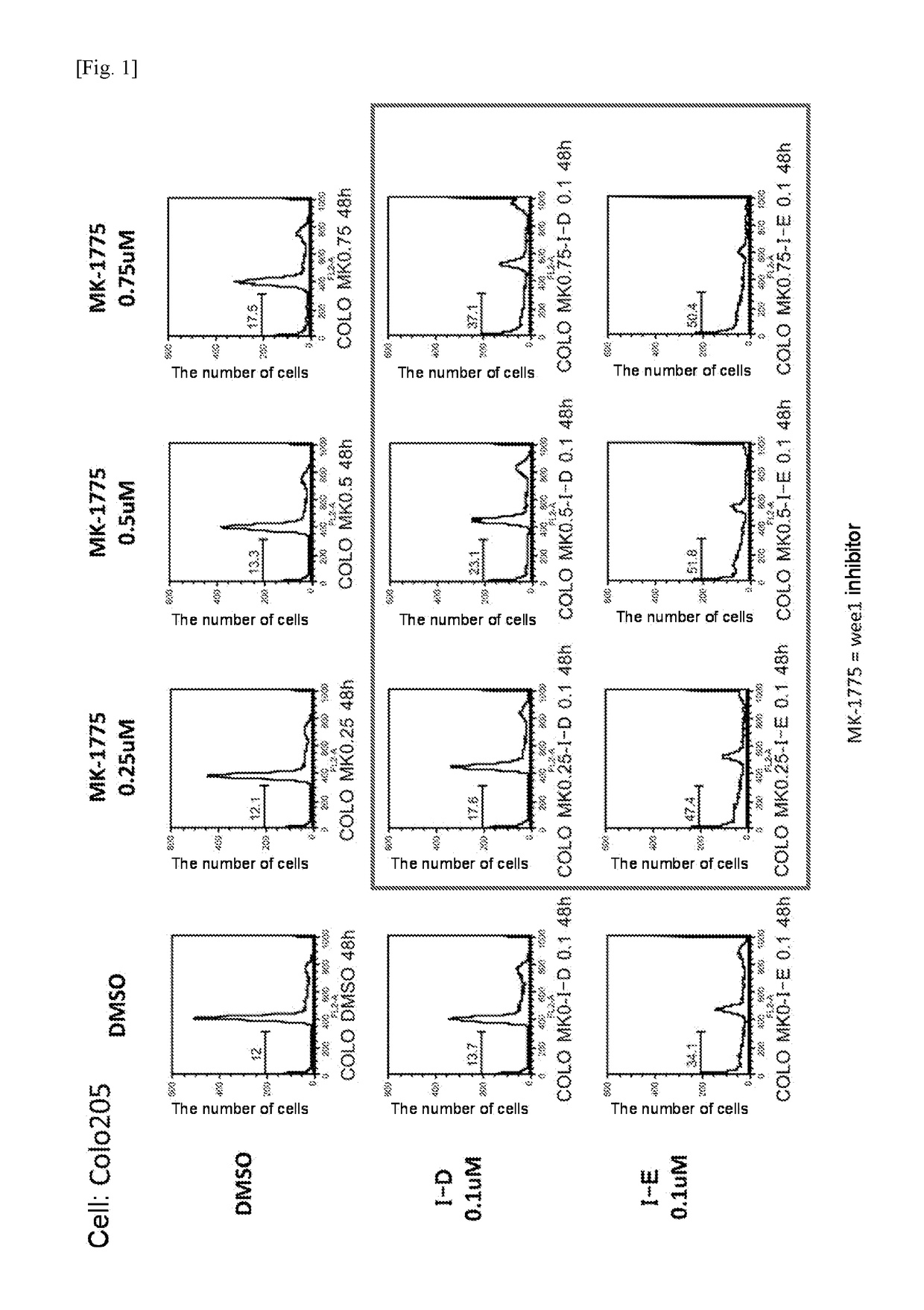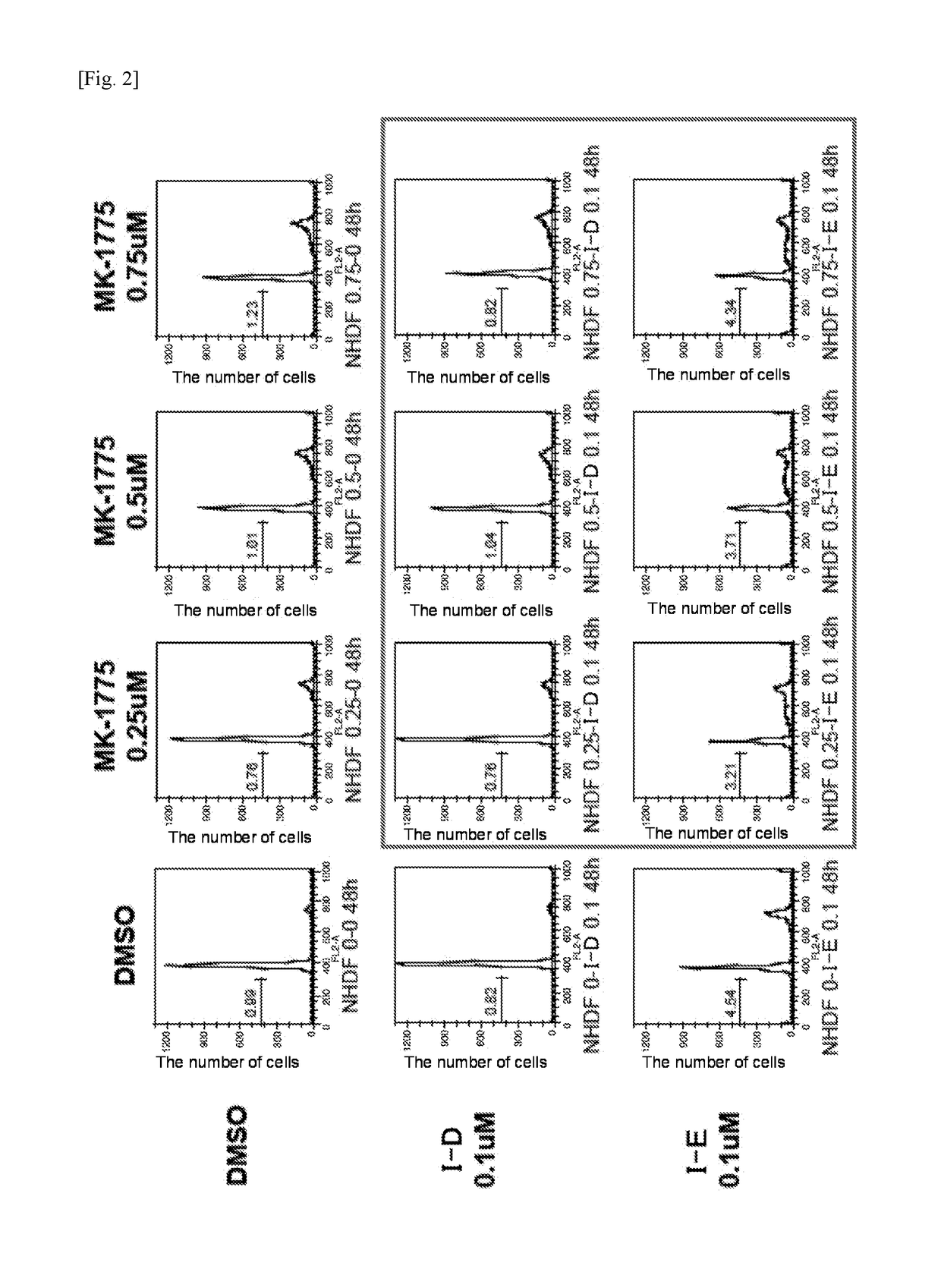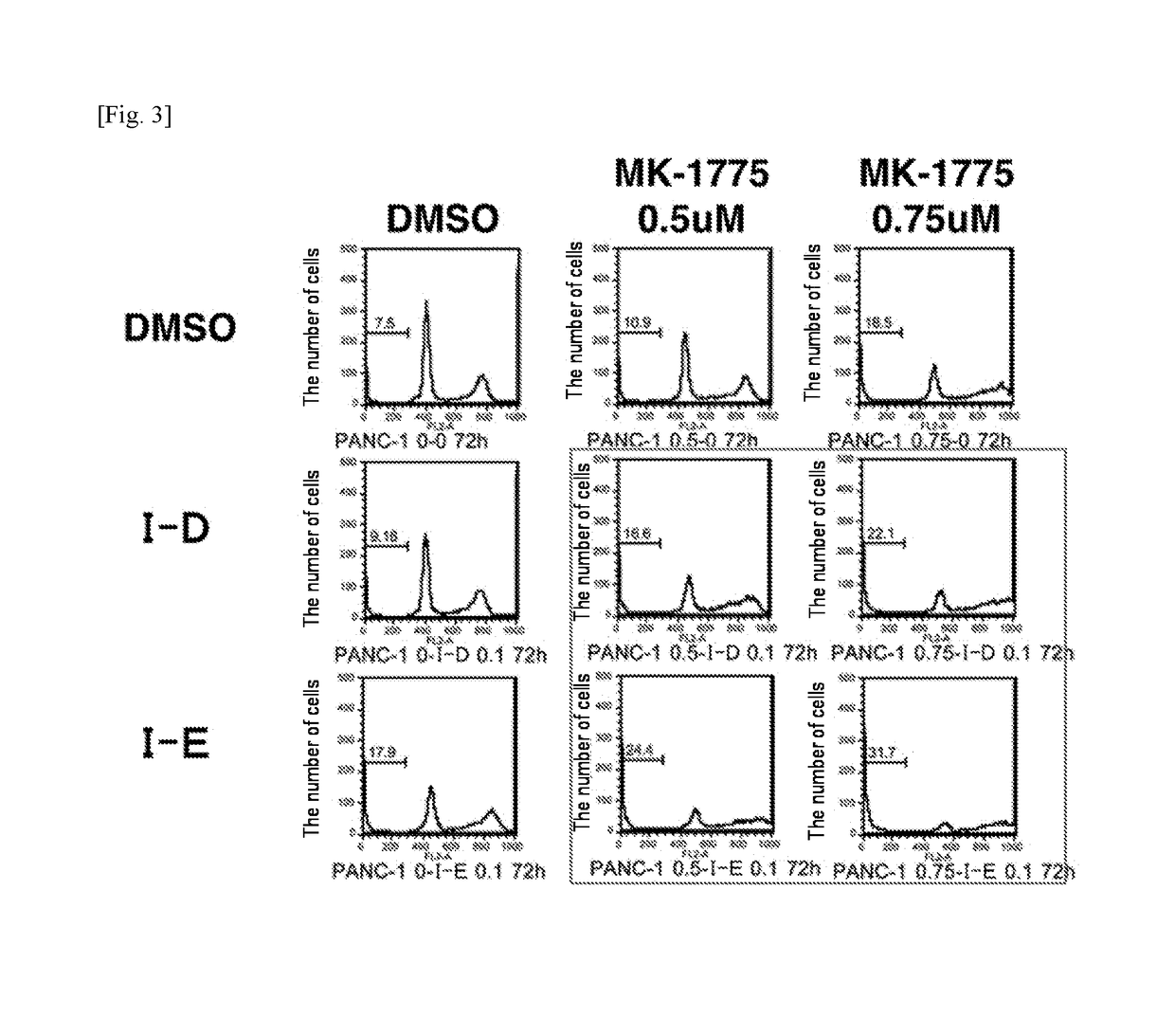Anticancer agent composition
a technology of anticancer agents and compositions, applied in the field of anticancer compositions, can solve the problems of less effective inhibition of normal cells, less than satisfactory anticancer effect or selectivity of cancer cells, and less than satisfactory cell death to cancer cells, so as to achieve the effect of reducing the number of cancer cells
- Summary
- Abstract
- Description
- Claims
- Application Information
AI Technical Summary
Benefits of technology
Problems solved by technology
Method used
Image
Examples
example 1
Interaction Between Compound (I-D) or Compound (I-E) as Cdc7 Inhibitor and Wee1 Inhibitor as M-phase Promoter in Combination
[0332]Specifically, 0.1 μM of compound (I-D) was coadministered with DMSO (control) or 0.25 μM, 0.5 μM, and 0.75 μM each of the Wee1 inhibitor MK-1775 to Colo205 cells, and the number of cells that died was examined. Also, 0.1 μM of compound (I-E) was coadministered with DMSO (control) or each concentration of MK-1775 to the cells, and the number of cells that died was examined. The results are shown in FIG. 1.
[0333]The cell death induced by compound (I-D) or compound (I-E) was found to be synergistically increased by the coadministration with the Wee1 inhibitor.
[0334]MK-1775 in the concentration range of 0.1 to 1 μM efficiency increased the proportion of cells in the M-phase. Actually, synergistic increase was observed in the ratio of the killed cells to the cells treated with MK-1775 and compound (I-D) or compound (I-E) in combination.
example 2
Cancer Cell Selectivity of Interaction Between Compound (I-D) or Compound (I-E) and MK-1775 (Wee1 Inhibitor)
[0335]In order to examine whether the synergistic effect of compound (I-D) or compound (I-E) and MK-1775 (Wee1 inhibitor) would be observed in normal cells, normal human skin fibroblast (NHDF) cells were treated with the combination drug and examined.
[0336]The NHDF cells were treated with compound (I-D) or compound (I-E) and varying concentrations of MK-1775 in combination.
[0337]Specifically, 0.1 μM of compound (I-D) was coadministered with DMSO (control) or 0.25 μM, 0.5 μM, and 0.75 μM each of MK-1775 to NHDF cells, and the number of cells that died was examined. Also, 0.1 μM of compound (I-E) was coadministered with DMSO (control) or each concentration of MK-1775 to the cells, and the number of cells that died was examined. The results are shown in FIG. 2.
[0338]The examination of compound (I-D) or compound (I-E) at a concentration of 0.1 μM showed no increase in cytotoxicity...
example 3
Interaction Between Compound (I-D) or Compound (I-E) and MK-1775 in Panc-1 Cells (Pancreatic Cancer Cell Line)
[0339]Specifically, 0.1 μM of compound (I-D) was coadministered with DMSO (control) or 0.5 μM and 0.75 μM each of MK-1775 to pancreatic cancer cell line Panc-1 cells, and the number of cells that died was examined. Also, 0.1 μM of compound (I-E) was coadministered with DMSO (control) or each concentration of MK-1775 to the cells, and the number of cells that died was examined. The results are shown in FIG. 3. The cell death of the Panc-1 cells (pancreatic cancer cell line) induced by compound (I-D) or compound (I-E) was also found to be synergistically increased by the coadministration with the Wee1 inhibitor.
PUM
| Property | Measurement | Unit |
|---|---|---|
| body weight | aaaaa | aaaaa |
| structure | aaaaa | aaaaa |
| fluorescent | aaaaa | aaaaa |
Abstract
Description
Claims
Application Information
 Login to View More
Login to View More - R&D
- Intellectual Property
- Life Sciences
- Materials
- Tech Scout
- Unparalleled Data Quality
- Higher Quality Content
- 60% Fewer Hallucinations
Browse by: Latest US Patents, China's latest patents, Technical Efficacy Thesaurus, Application Domain, Technology Topic, Popular Technical Reports.
© 2025 PatSnap. All rights reserved.Legal|Privacy policy|Modern Slavery Act Transparency Statement|Sitemap|About US| Contact US: help@patsnap.com



